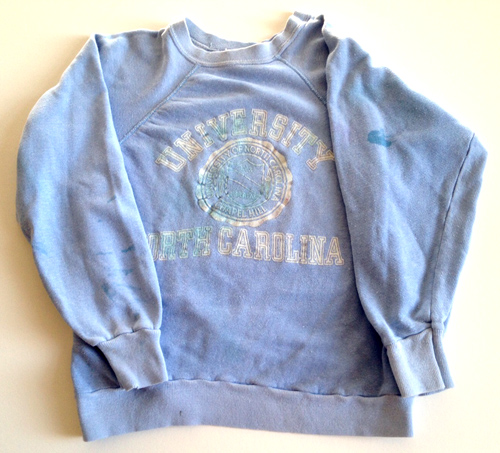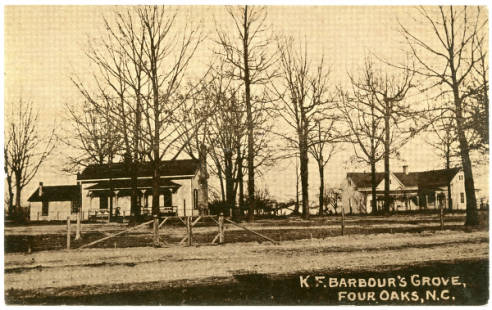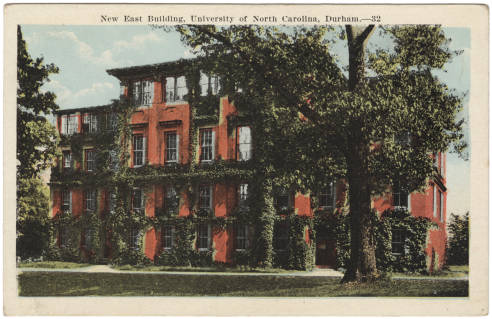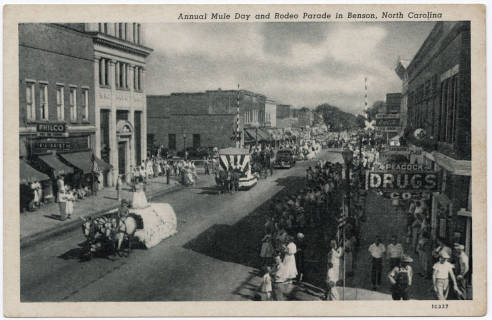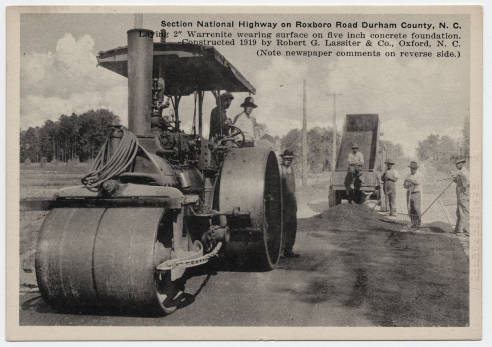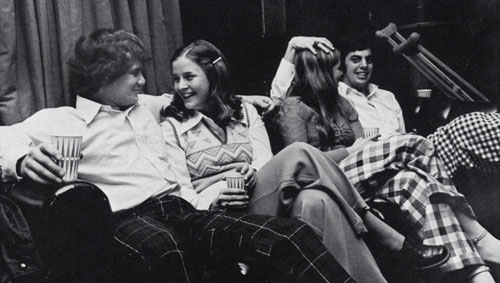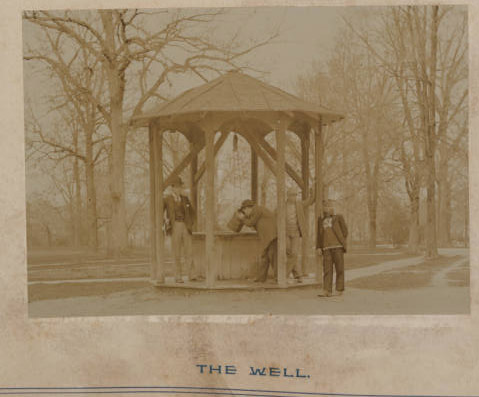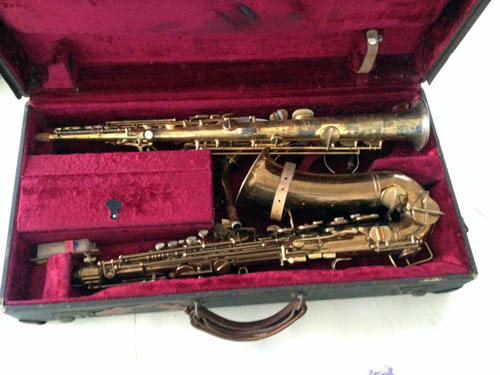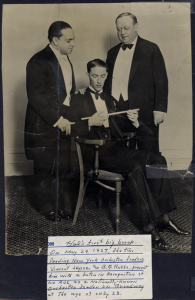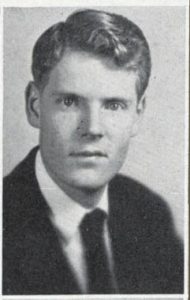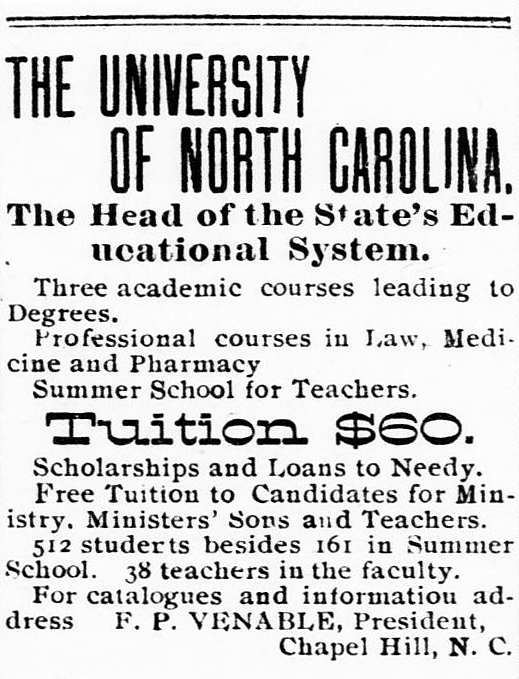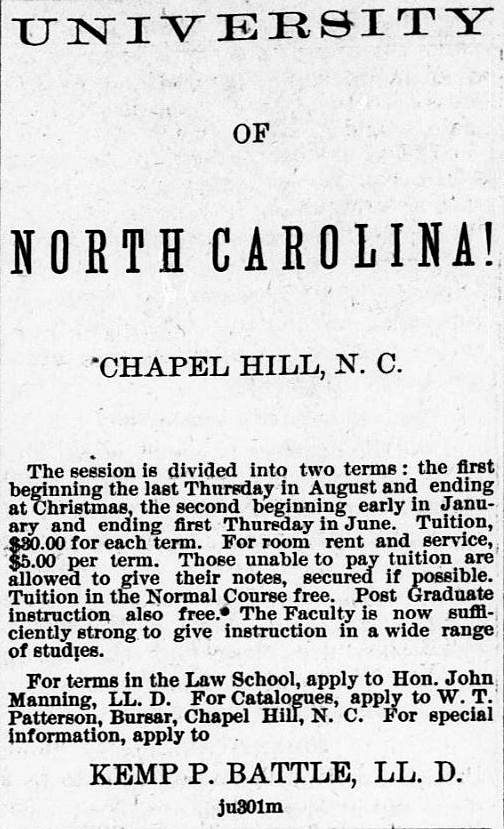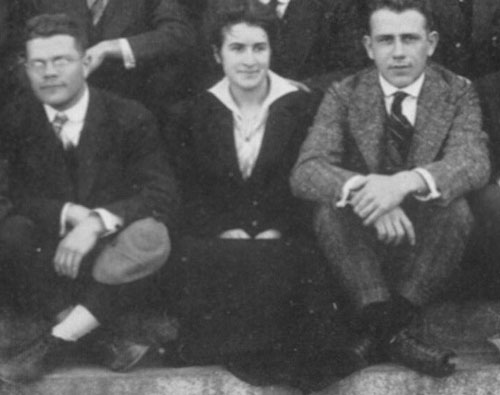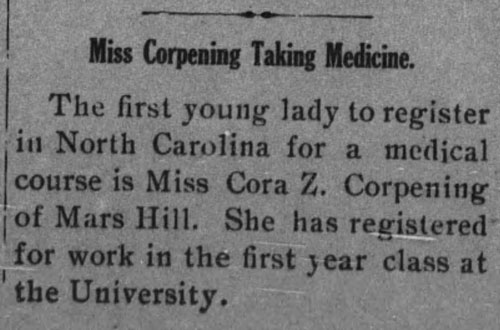Our March Artifact of the Month is a UNC sweatshirt that saw two generations of UNC basketball championship wins — and carries the spray paint to prove it.
Wynne Maynor Miller bought this faded Carolina blue shirt during her freshman year in 1982 and was wearing it as she celebrated UNC’s 1985 championship victory on Franklin Street. She recalls:
I bought this blue sweatshirt during my freshman year at UNC-Chapel Hill. It witnessed all the chaos on the night we won the NCAA Basketball Championship in 1982. I will never forget the final 30 seconds of the game when the Georgetown Hoyas had one point on us, 62-61. Michael Jordan stole the ball for a one-point win. The students in Morrison Dorm chanted and screamed so loud that I felt the building shake in my 8th floor room… We could hear the whole campus roaring. I grabbed my favorite sweatshirt and we headed to Franklin Street. Beer flowed in the streets, students painted each other with blue spray paint, and naked blue people hung from trees.
I graduated in December 1984, married my college sweetheart, and left my home state — but my heart never left Carolina.
Her daughter, Courtney Miller Hileman, wore the sweatshirt as UNC again won a championship in 2009, in what would have been her final semester had she not graduated early. Her recollection:
I don’t remember the specific details like my mom does. My memory contains a blur of Carolina blue, cheering, and the smell of fire. I remember the feeling of camaraderie gained from sharing a moment in sports history: the thunderous crowd transitioning into silence as we raised our hands and held our breath while watching Tyler Hansbrough at the free throw line; the communal resounding sigh of relief when he made the shot; and the emphatic ‘Go to Hell Duke’ at the end of the game.
The sweatshirt reminds me of that instant bond between alumni that only another Tar Heel can understand.
This storied sweatshirt has clearly been well loved, though it’s in good enough condition that a third generation might be able to share in this tradition. We’ll keep our fingers crossed that it proves to be lucky again.
You can see the sweatshirt, along with many other pieces of clothing worn by Carolina students, in the exhibition From Frock Coats to Flip Flops: 100 Years of Fashion at Carolina in the North Carolina Collection Gallery through June 5th.

